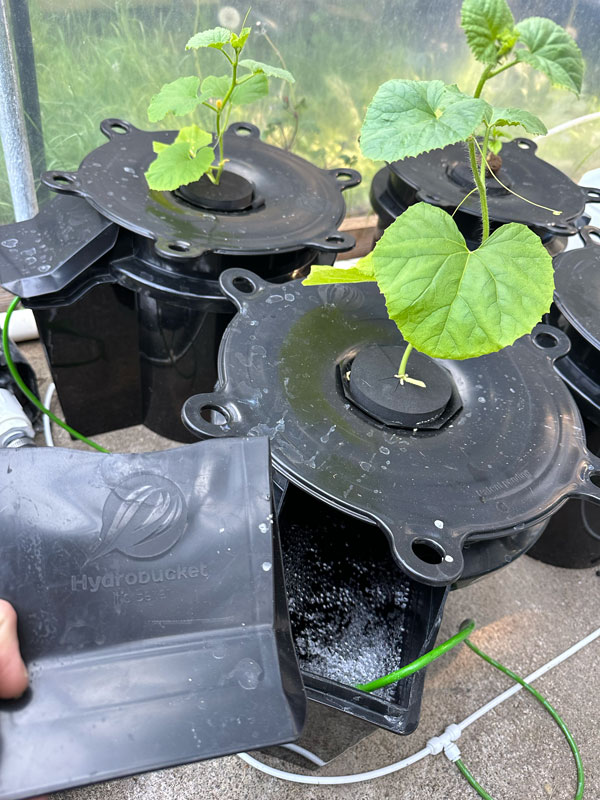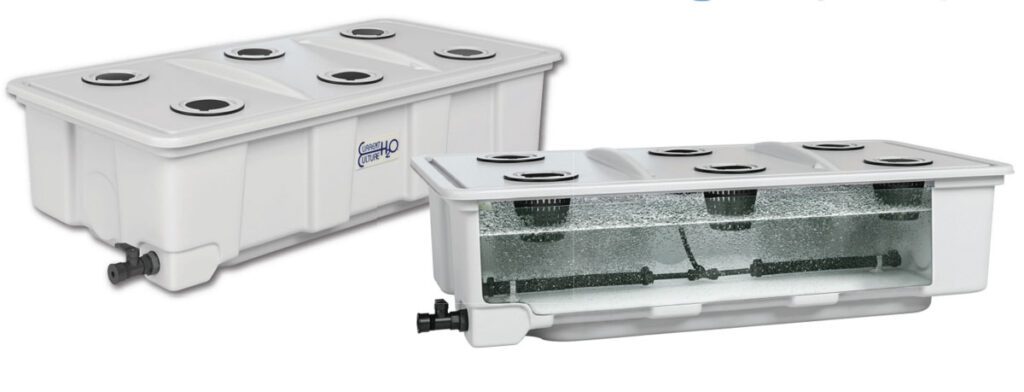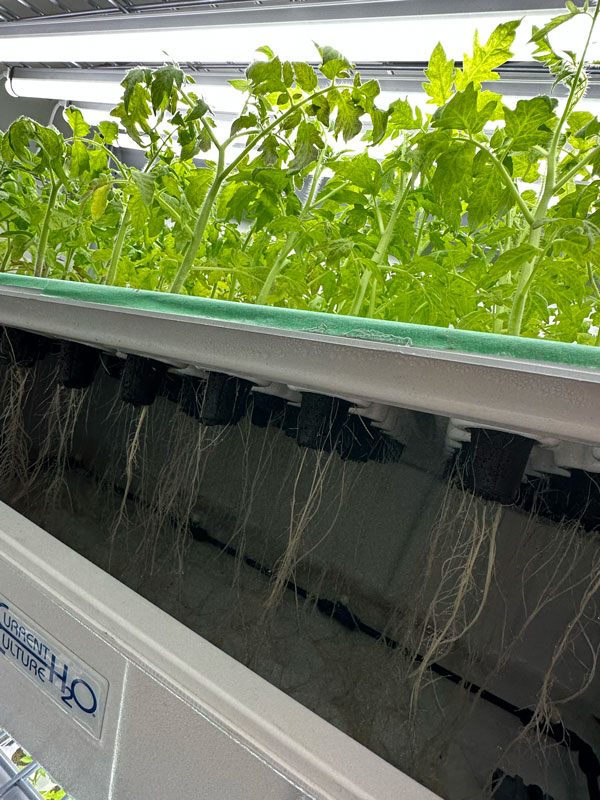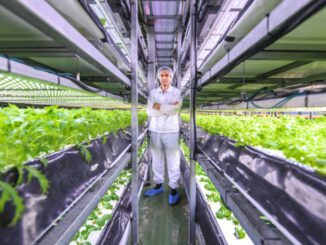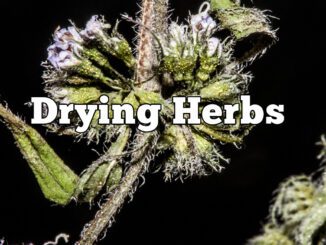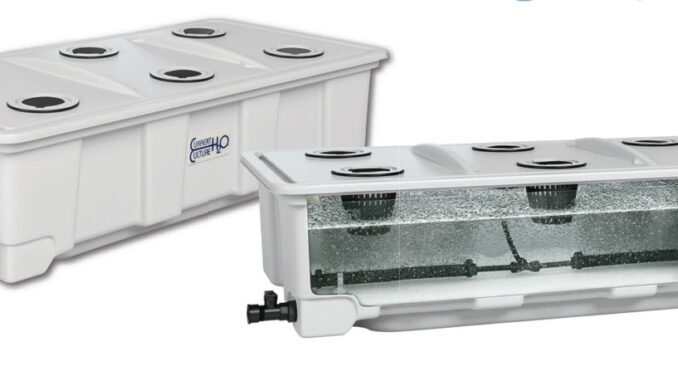
DWC Growing Part II (part one HERE)
DWC set ups are a great way to grow crops using less water and with fewer hassles versus traditional soil and soilless practices. Growers also note that they can get heavier yields, often faster, for the same volume of root space in Deep Water Culture. For example a 5 gallon DWC bucket can offer yields, given proper space to fill out, comparable to a 10 or 20 gallon pot filled with soil or soilless mix.
Setting up DWC systems is tidy, fairly straight forward and doesn’t require too great an investment at the hobby scale. Remember that just about everything you buy to start your DWC set ups is nearly entirely reusable. The only ongoing expenses tend to be fertilizer and occasionally replacing air stones or neoprene collar plant supports.
To recap, the basic components of DWC set ups are as follows:
root chamber (opaque tray, tub, bucket, etc)
secure fitting lid for root chamber that can support the weight of the plant at harvest
net pot
airstone & airline
air pump
plant support collar or small amount of grow rocks
Selecting the Right Spot for DWC Set Ups
Just about any space with enough vertical height can be used for DWC growing indoors or out. As long as plants receive adequate light, whether by sunshine or grow lights and have ventilated air or a steady breeze, they tend to do well in a DWC set up. Grow tents and greenhouses are ideal. If well constructed, your DWC system will be water tight and leak proof (except for human error). However, you will be working with volumes of water and nutrient solution; so you may have a splash here and there. Definitely don’t set up on your best carpeted area without protecting floors from spills and splashes.
Buying VS Constructing Your DWC Set Up
There are some very well made purpose built DWC systems available out there. Additionally, specialty made DWC parts and components are readily available that allow you to have success easier if you are building your own. While the principle of deep water culture growing is simple enough and doesn’t require many, if any, moving parts there are some things to watch out for.
Let’s call them the DO NOTS OF DEEP WATER CULTURE:
-using metal fittings that come into contact with nutrient solution like copper or brass
-using materials that are not light proof (opaque)
-using materials that are not chemically inert, ie they will react with nutrients or leech harmful substances into the nutrient solution (phytotoxicity)
-using anything that isn’t 100% leak proof
If you’re looking for something on the professional grower or researcher level, the UC Solo Comm is an excellent choice, allowing you to grow up to six high yielding plants in an area of roughly 2 feet by 4 feet. The UC Solo Comm is made by CurrentCultureH2O, a leading manufacturer in professional level hydroponic systems–it features the same components and build quality as their commercial designs. Just fill with water, plug in the air pump and add the included nutrient solutions and you’re ready to start growing.
As we mentioned in Part I of our how to DWC growing series, the HydroBucket is a great platform for an easy and reliable DWC DIY build. Available in single 5 gallon specialty buckets, lids and pods (like a net basket), it’s entirely scalable; start with a few units and keep adding as your tooth for high quality harvests continues to grow. You’ll just need a good quality air pump, air stones and airline. TIP the side access port is big enough to fit a small pump inside–perfect for draining your HydroBuckets completely at ground level for nutrient change outs. No need to lift lids.
Starting Plants & Transplanting for DWC Set Ups
In our opinion, the less growing media involved, the better. Your transplants should be in no bigger than a 3 inch rockwool cube before transplanting into the system. Growing mediums, even well cared for, tend to harbour things like fungus and bacteria; some of these can get to harmful levels once in the highly moist, warm and aerated covered DWC root chamber environment. Note that within a few days after transplanting into a DWC set up, the roots will start growing in the aerated nutrient solution below rather than in the medium–so you can allow it to dry out once there are sufficient roots growing in the aerated solution.
What about plants started in soil or soilless media?
Yes, it can be done–but there are some risks of contamination. Rinse off the growing media from the root system as completely as possible, even if it means trimming some roots (they’ll grow new ones).
Once washed away, dipping bare roots in a mild hydrogen peroxide or hypochlorous acid solution before planting into your DWC system can help further reduce the possibility of introducing any soil borne pathogens into your system.
Plants started in aeroponic systems, whether from seed or plant cuttings are the best choice for DWC transplants because there is no growing medium at all to risk contamination. It’s also a great way to start new plants a few weeks before you harvest your DWC crop, helping keep your grow space productive to the maximum.
In our next installment we’ll talk more about managing the DWC growing environment and offer some insights into best crop feeding and problem prevention practices.
Meanwhile, remember that less is more when it comes to feeding plants in DWC; this means using nutrients at roughly ¼ of the recommended strength versus conventional methods for a given plant growth phase. With no growing medium to get in the way and lots more oxygen for roots, nutrient absorption rates are greatly potentiated. DWC set ups can significantly reduce your fertilizer use, saving money and the environment
How Much Aeration is Enough
To an extent, the more bubbles, the better. Plants that receive less aeration, while remaining healthy, will not grow as fast as their better aerated counterparts. The differences can become apparent in a short few weeks. It’s better to oversize your air pump and include a bleeder valve or extra tube to leak a little air if it happens to be too much aeration (ie causing splashing about). By starting with a bigger air pump you can expand with more individual DWC units before needing to add another one. TIP: when it comes to air pumps, you often get what you pay for (vs loud and unreliable). Make sure the air pump you use is oilless. Most aquarium and pond air pumps are great for DWC set ups.
Stay tuned for more!

